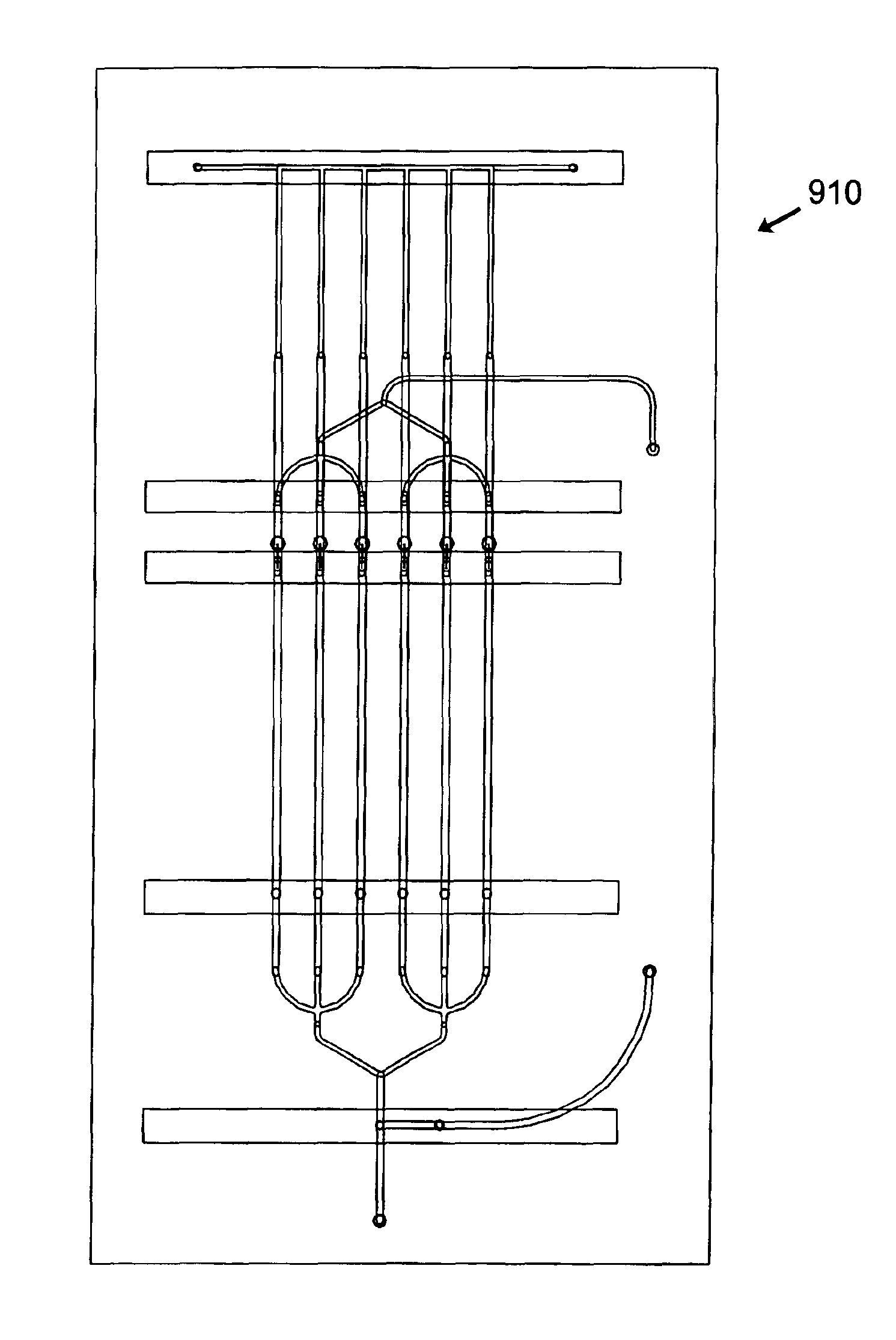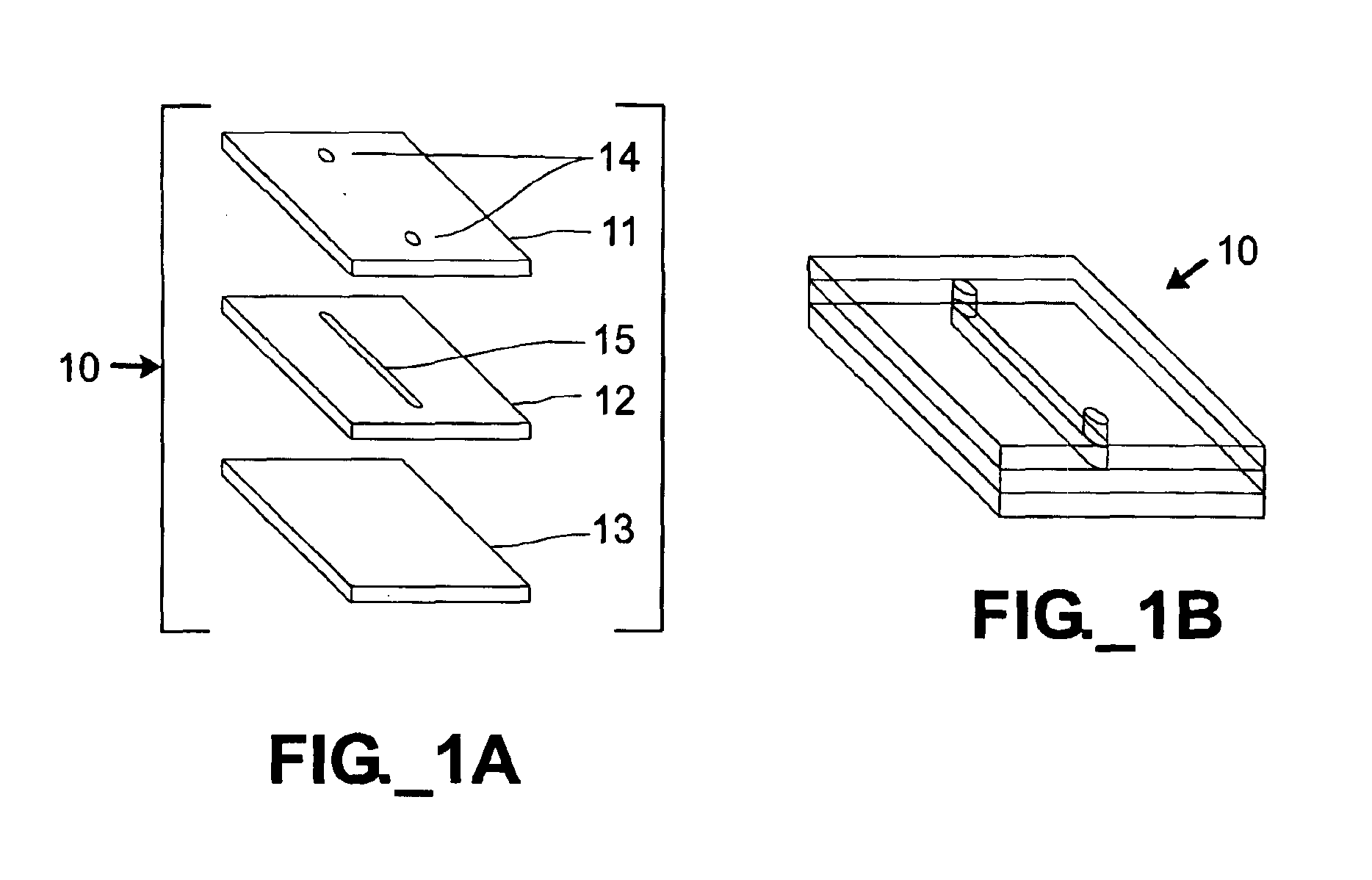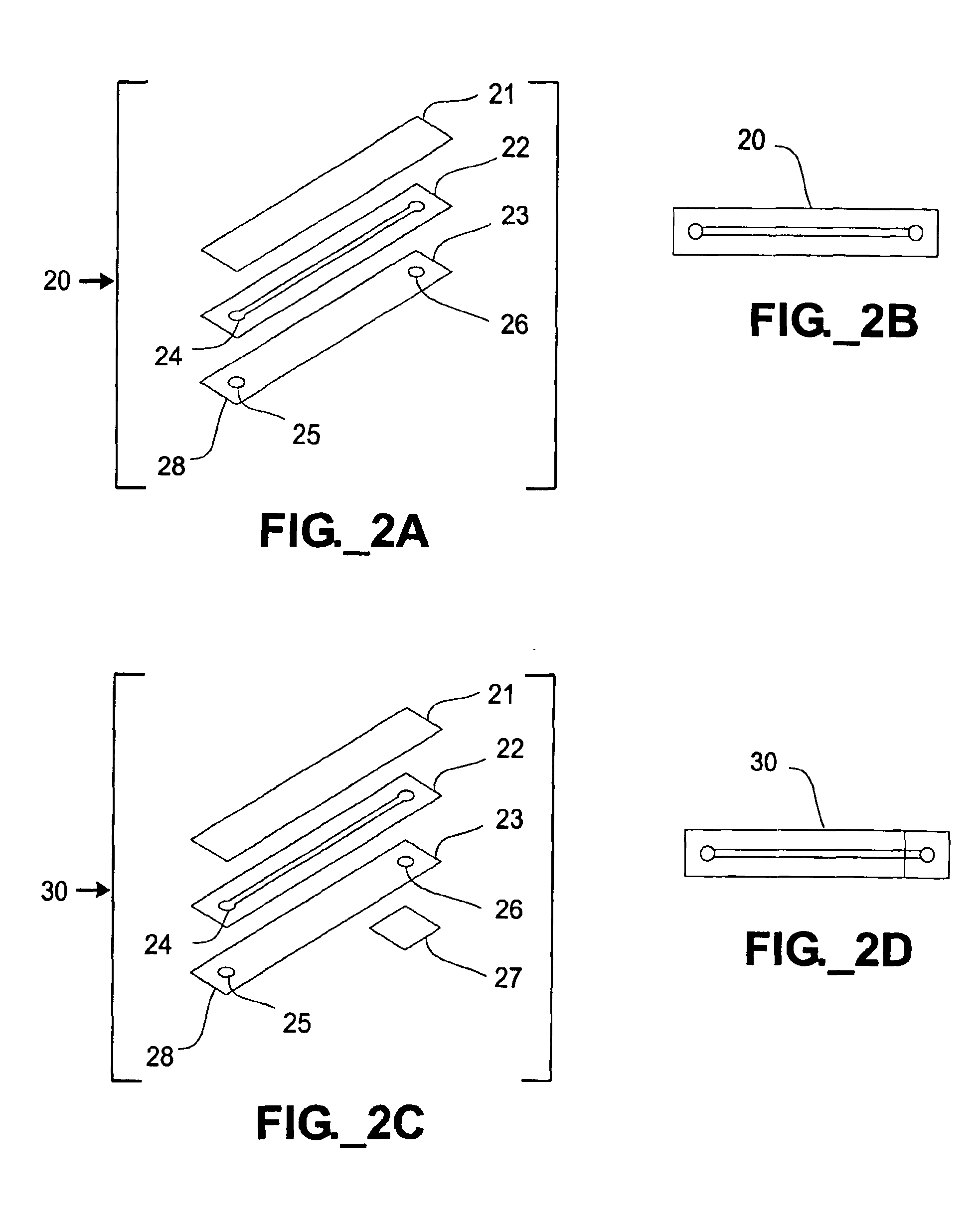Microfluidic devices for methods development
a microfluidic device and method technology, applied in the direction of flow mixers, diaphragms, cells, etc., can solve the problems of high tool-up costs for both of these techniques, complex biochemical reactions, and inability to quickly prototyping and manufacture flexibility,
- Summary
- Abstract
- Description
- Claims
- Application Information
AI Technical Summary
Benefits of technology
Problems solved by technology
Method used
Image
Examples
Embodiment Construction
Definitions
[0097]The term “adhesiveless” as used herein refers to the state of lacking any substance adapted to stick, bond, or otherwise adhere one surface to another.
[0098]The term “analysis” refers to the separation, extraction, purification, and / or identification of one or more ingredients of a substance.
[0099]The terms “channel” or “chamber” as used herein are not intended to be restricted to elongated configurations where the transverse or longitudinal dimension greatly exceeds the diameter or cross-sectional dimension. Rather, such terms are meant to comprise cavities or tunnels of any desired shape or configuration through which liquids may be directed. Such a fluid cavity may, for example, comprise a flow-through cell where fluid is to be continually passed or, alternatively, a chamber for holding a specified, discrete amount of fluid for a specified amount of time. “Channels” and “chambers” may be filled or may contain internal structures comprising, for example, valves, f...
PUM
 Login to View More
Login to View More Abstract
Description
Claims
Application Information
 Login to View More
Login to View More - R&D
- Intellectual Property
- Life Sciences
- Materials
- Tech Scout
- Unparalleled Data Quality
- Higher Quality Content
- 60% Fewer Hallucinations
Browse by: Latest US Patents, China's latest patents, Technical Efficacy Thesaurus, Application Domain, Technology Topic, Popular Technical Reports.
© 2025 PatSnap. All rights reserved.Legal|Privacy policy|Modern Slavery Act Transparency Statement|Sitemap|About US| Contact US: help@patsnap.com



